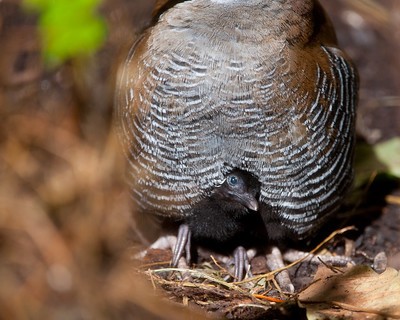
Walking through the tropical rainforest room in Pittsburgh, specifically at the National Aviary, the first thing one will probably notice is the hyacinth macaws hanging on mango trees.
Other than these massive parrots are 90 tropical birds which represent over 30 species from the different parts of the world.
However, in the middle of all the avian impressiveness, a single bird is hardly ever to be seen-the Guam rail. They're definitely not extinct but they are doubted to be seen.
The aviary's Animal of Collections director, Kurt Hundgen said while scouring the understory and was looking for the said birds, "We can't make a liar out of me." Failing to see any, Hundgen whistles out some short calls hoping for the rails to come.
He even added, there are 9 rails at the aviary, but none of them was answering his call.
Unfortunately too, this bird type is quite more challenging to find in its native home, specifically on the Micronesian Island in Guam.
Some Good News
There is some good news though, amidst the non-responsive rails. Just before the species totally left the world, scientists were able to catch rails and develop a confined breeding program at several mainland institutions in the US, and on Guam, which includes the National Aviary.
Additionally, the breeding program has functioned very well that the Guam rails' populations have been reintroduced to nearby islands of Rota and Cocos.
The islands didn't have any rails at all before, but they don't have any snakes either, making them perfect "sanctuaries for Guam rails."
Additionally, with only 200 birds on Rota and 60 on Cocos, the Aviary director said, there are no signs that the birds are turning into an intrusive species themselves.
At present, Pittsburgh, according to reports, has provided 39 birds and this, Hundgen proudly emphasizes, "is more than any other Aquariums institution and Association of Zoos."
Incidentally, Guam rails are the only second bird to achieve this feat in history.
Return to Guam
Scientists have discovered that dropping pills which are glued to dead mice coming from helicopters that fly over fenced-off areas can essentially put a substantial impression in the populations of the local snakes.
Still, as scientists presented in recent research when only a few of the snakes remain, it is then, almost nearly to find them.
Therefore, it may never be safe as well, for the Guam rail to go back to Guam. In addition, the prevention of the rails' new island is completely dominant.
More so, to that end, the American Geological Survey mounted fencing that's snake-proof all over the port on Rota.
As a contribution to the initiative of returning Guam rails to the wild, according to Hundgen, "has been rewarding," although, the public, the director continued, should not lose sight of just how much effort, money and time it takes "to bring a species back from the brink."
Hundgen admitted, species can indeed be brought back, as the nine rails mentioned: "disappear back into the underbrush." Lastly, the National Aviary director said, it is incredible that they still have Guam rails at all.










